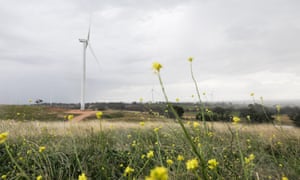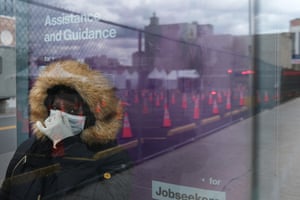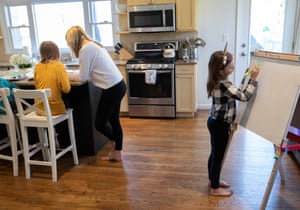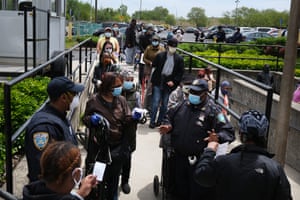Extract from The Guardian
The Green Recovery
Renewable energy
Frank Jotzo
It will not do to wait until the next power plant announces its closure. Building alternative infrastructure should start now
The
Covid-19 recession will bring fiscal stimulus on a massive scale. There
are high hopes that the recovery will be green but it could be an
uphill struggle. A big opportunity for Australia’s governments is to
keep the renewable energy revolution going.
There will be pressure to invest in anything that quickly brings back jobs and prosperity, never mind long term, social or environmental goals. A return to the world as it was in 2019 will seem a marvellous goal for the many people whose jobs have gone or whose businesses have faltered. In order to improve the economy relative to pre-Covid, to build back better, will need governments to lead.
The forces pushing the other way are strong. Fossil fuel interests see Covid as a chance to push their barrel, all too evident in the push under way in Australia to increase gas production, regardless of the fact that it would raise greenhouse gas emissions for a long time to come. In the United States, longstanding environmental protection rules have been suspended under the cover of Covid, and Brazil’s government plans to change the rules on the Amazon while attention is on the pandemic. In China, the buzzword is “new infrastructure” but early indications are that new government spending on projects such as rail and telecoms is still overshadowed by building of coal power plants.
Policy documents released last week suggest that Australia’s meagre patchwork of emissions measures is now to be amended a little, but carbon pricing remains unmentionable.There will be pressure to invest in anything that quickly brings back jobs and prosperity, never mind long term, social or environmental goals. A return to the world as it was in 2019 will seem a marvellous goal for the many people whose jobs have gone or whose businesses have faltered. In order to improve the economy relative to pre-Covid, to build back better, will need governments to lead.
The forces pushing the other way are strong. Fossil fuel interests see Covid as a chance to push their barrel, all too evident in the push under way in Australia to increase gas production, regardless of the fact that it would raise greenhouse gas emissions for a long time to come. In the United States, longstanding environmental protection rules have been suspended under the cover of Covid, and Brazil’s government plans to change the rules on the Amazon while attention is on the pandemic. In China, the buzzword is “new infrastructure” but early indications are that new government spending on projects such as rail and telecoms is still overshadowed by building of coal power plants.
Thankfully renewable energy is now by far the cheapest way to produce electricity from any newly built plants. We’ve seen a huge boom in solar and wind and power. Even the government’s new discussion paper towards its technology roadmap acknowledges that the future is renewables rather than coal, though it also gives a nod to gas.
But the recession could thwart investor appetite in new electricity generation plants. In the east coast electricity market, average wholesale prices are now less than half of what they were a year ago – as a result of lower gas prices, more renewables on the grid, and lower electricity demand. While that is great news for consumers including energy-intensive industry, it dampens the case for new renewables investment. It also puts extra pressure on old coal-fired power plants.
Regardless of the dynamics in the electricity market, it is a sure bet in Australia to rapidly expand solar and wind power, new transmission lines and energy storage. It is what will replace the coal power fleet, power electric cars, and provide the foundation for the energy-intensive export industries of the future.
Governments should now step up and accelerate renewables investment. Large renewable energy zones have been mapped out, and New South Wales already has a plan to deliver three of them. The coming recession is the best possible reason to step up the pace.
Renewable energy projects can be built quickly and they can be scaled up over time. Governments can fund and own renewables generators, or provide long-term fixed-price contracts to companies that build and operate them.
And we urgently need new power lines. The usual way would be a lengthy process to plan, contract and build transmission lines and for private companies to build wind and solar projects. With the recovery stimulus imperative, governments can and should make it happen more quickly.
In parallel, governments need to be ready to support the regions where coal-fired plants will inevitably close down. It will not do to wait until the next power plants in the Hunter and Latrobe valley announce closures on commercial grounds. Building alternative infrastructure and supporting new areas of business should start right now.
The fundamental criteria for economic stimulus that stands the test of time are simple: projects need to be able to start soon, use a lot of local inputs, result in something useful for the long run, and be compatible with a net-zero emissions trajectory.
Expanding renewable energy and the power grid scores high on those criteria. Many other infrastructure projects are attractive, including public transport, retrofitting buildings for energy efficiency, and land restoration.
And we have the chance to lay the foundation for clean export industries of the future, such as renewables-based hydrogen and steel. The obvious way to get started on these is a large public investment program in R&D and pilot plants. The government’s technology roadmap can identify priority investments. This should then quickly be followed by cash.
Governments will take out big loans to get the economy out of the Covid recession. We must be sure to spend it in a way that benefits our society in the future. That means creating better social fabric, more education and infrastructure. And it means helping build up industries that have a strong prospect in a world economy that acts on climate change.
Today’s younger people will be paying the debt back through higher taxes. They should be able to look back at Covid-19 as a time when useful public investments were made that helped protect their future.
• Frank Jotzo is the director of the Centre for Climate Economics and Policy at the Australian National University














